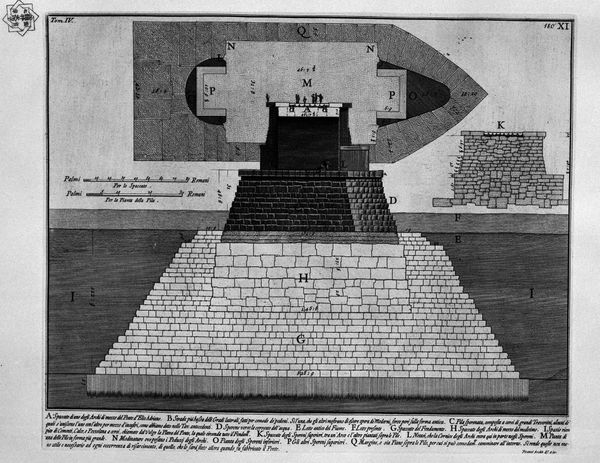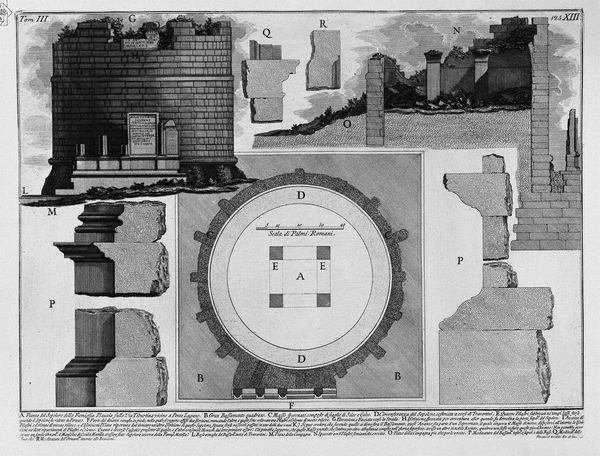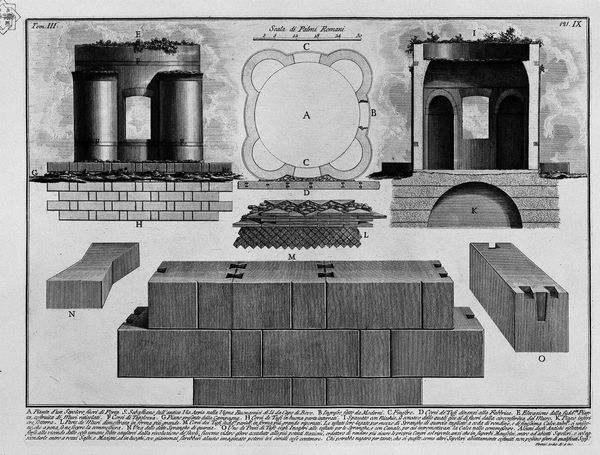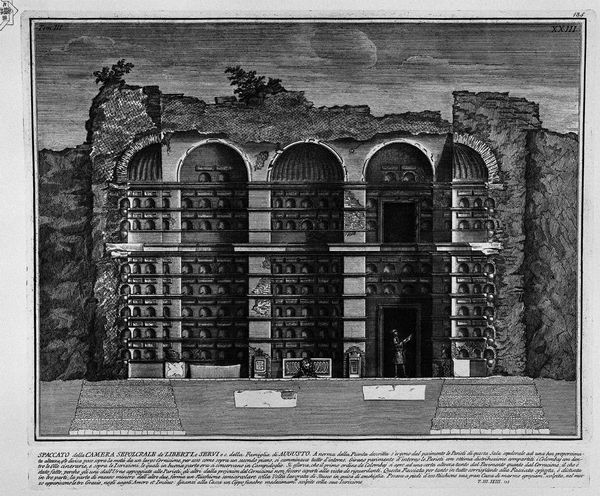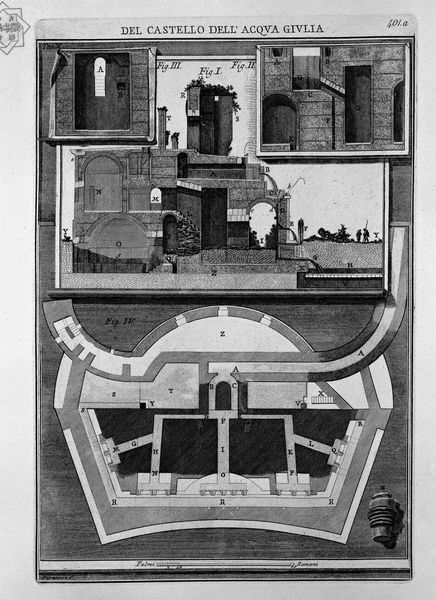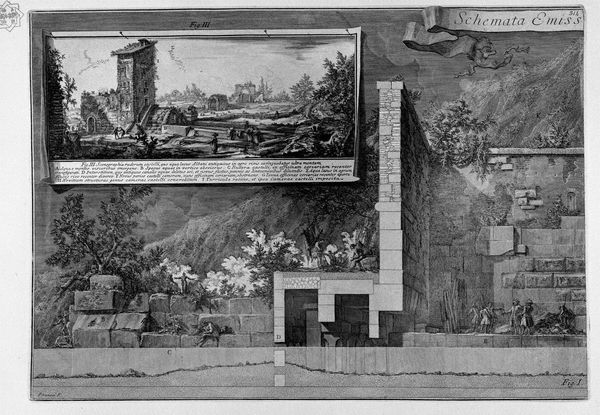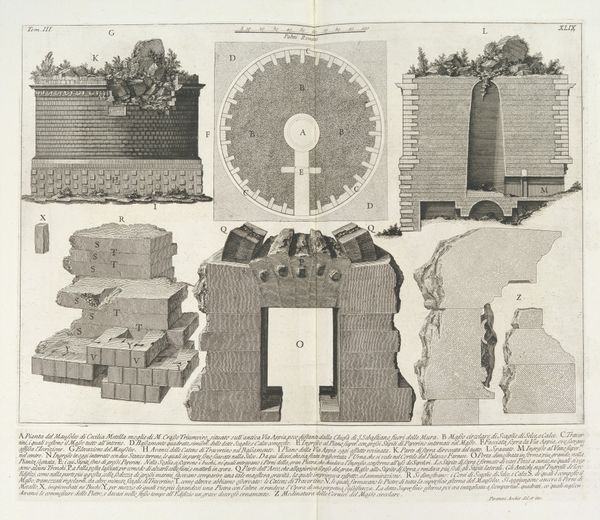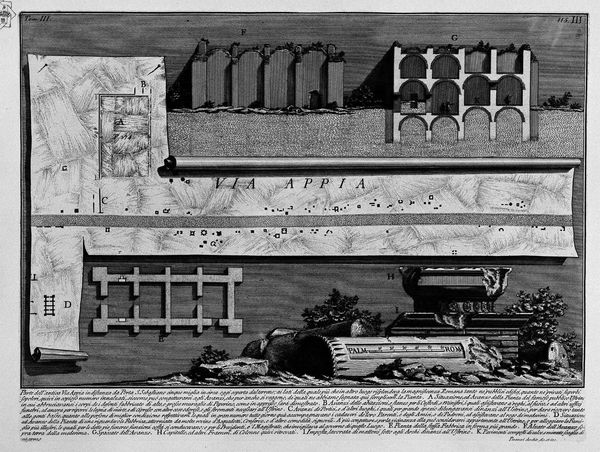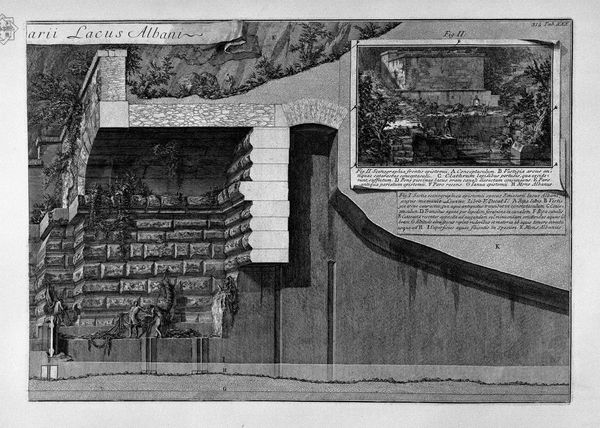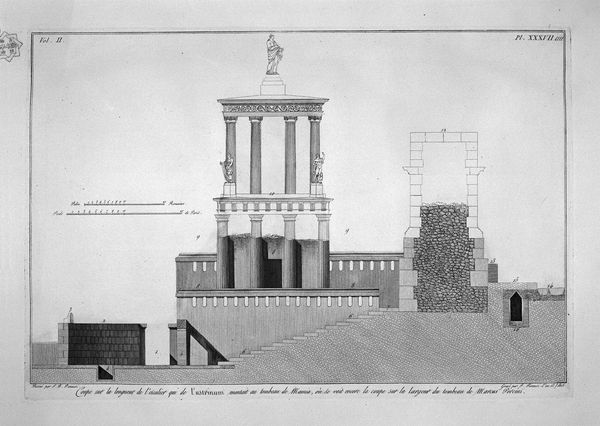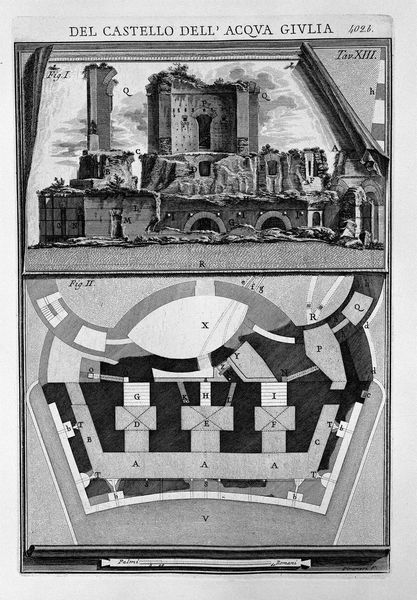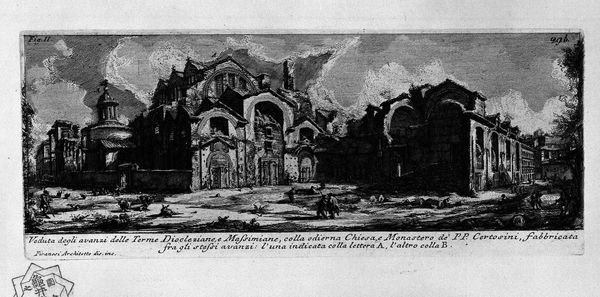
The Roman antiquities, t. 2, Plate XL. View of a tomb oldest existing bridge in a vineyard near Lugano. 1756
0:00
0:00
drawing, print, etching, engraving, architecture
#
drawing
# print
#
etching
#
landscape
#
perspective
#
romanesque
#
ancient-mediterranean
#
arch
#
history-painting
#
engraving
#
architecture
Copyright: Public domain
Curator: Here we have Giovanni Battista Piranesi's "The Roman antiquities, t. 2, Plate XL. View of a tomb oldest existing bridge in a vineyard near Lugano," an etching and engraving from 1756. Editor: Wow, a map of a ghost! It feels like peeking into the bones of something grand and ruined, all architectural rigor haunted by wisps of romantic decay. Curator: Indeed. Piranesi, through works like this, played a crucial role in shaping 18th-century European understandings of Roman antiquity. This print is from his series on Roman antiquities, showcasing not only the physical remnants but also his own interpretations and reconstructions of ancient structures. Editor: There's a tension, right? The analytical layout above, almost clinically detached, contrasts with those decaying elevations. I get a sense of trying to capture something impossibly vast and gone, pinned down but forever beyond reach. The sharp angles make the decay even sadder somehow. Curator: Precisely. It's also worth noting Piranesi's use of dramatic perspective. The etching technique allows for fine detail in the ruins while also conveying the sheer scale of the site. This visual drama, while seemingly objective, often served to enhance the grandeur and power of Rome in the eyes of his contemporaries. He had the drama dialed to 11. Editor: Absolutely! And I get such a palpable feeling for how humans might’ve experienced these spaces – and especially for all those later gazers like us, yearning and inventing as much as they are simply ‘observing’. This artwork seems like the ancestor of an augmented reality game somehow. Curator: To further consider its historical place, Piranesi’s work catered to the Grand Tour travelers, wealthy Europeans who sought to experience classical culture firsthand. Prints like this offered a way to take home a piece of Rome and perpetuate its allure across Europe. It both served an academic purpose but equally acted as souvenir and status symbol. Editor: It becomes more poignant knowing the piece might have once served as a luxurious souvenir. Thinking about it, I come away with that hollow, yearning ache for history’s immensity, tinged with something speculative and hopeful about the future… it's a really strange combination. Curator: It’s been a pleasure delving into Piranesi’s creation with you. Its depiction serves not just a record of the past but reveals something interesting about ourselves in our role as continuing interpreters of a complicated history.
Comments
No comments
Be the first to comment and join the conversation on the ultimate creative platform.
